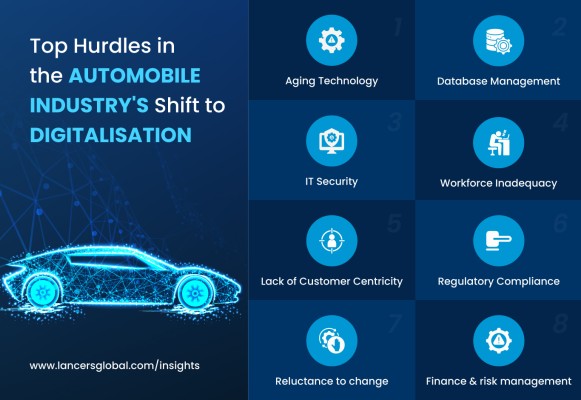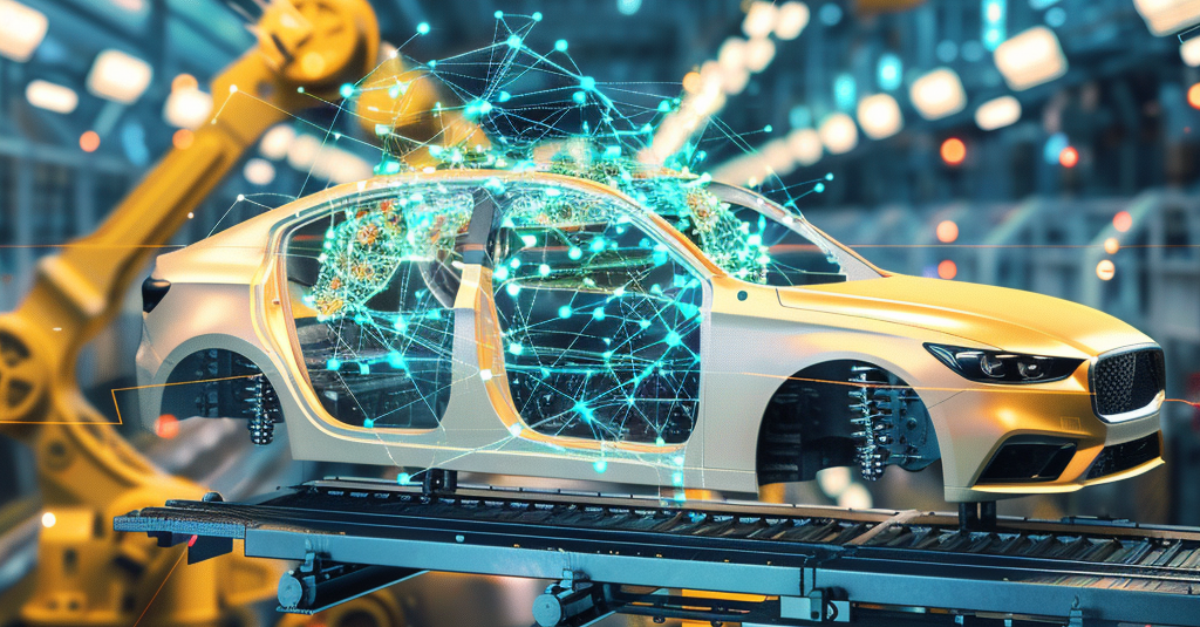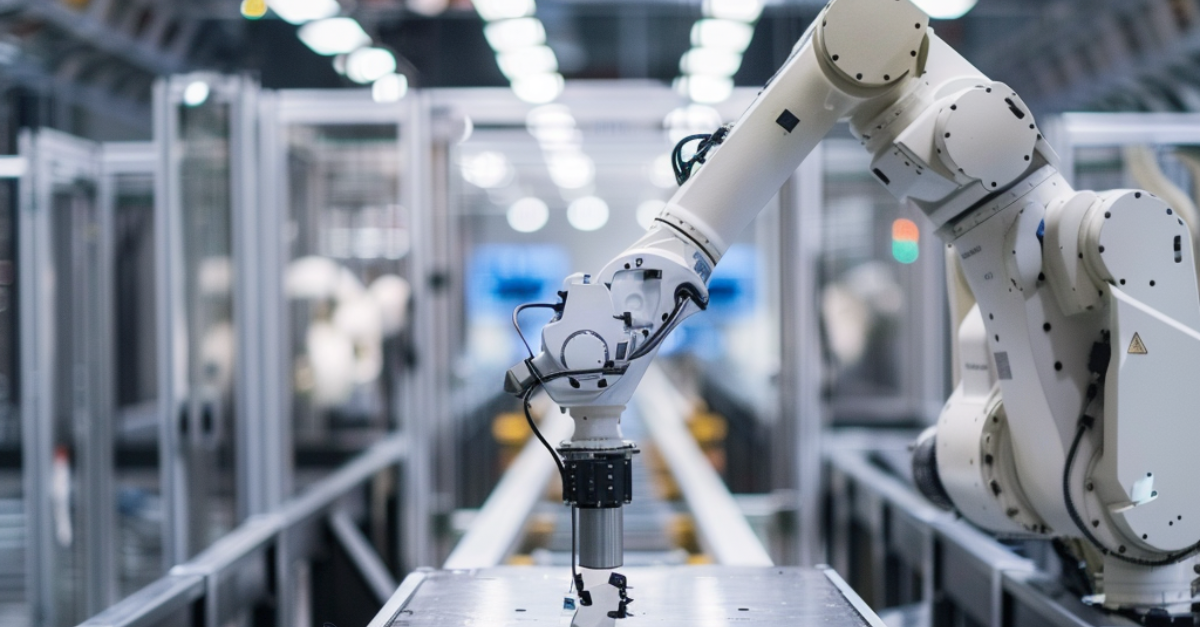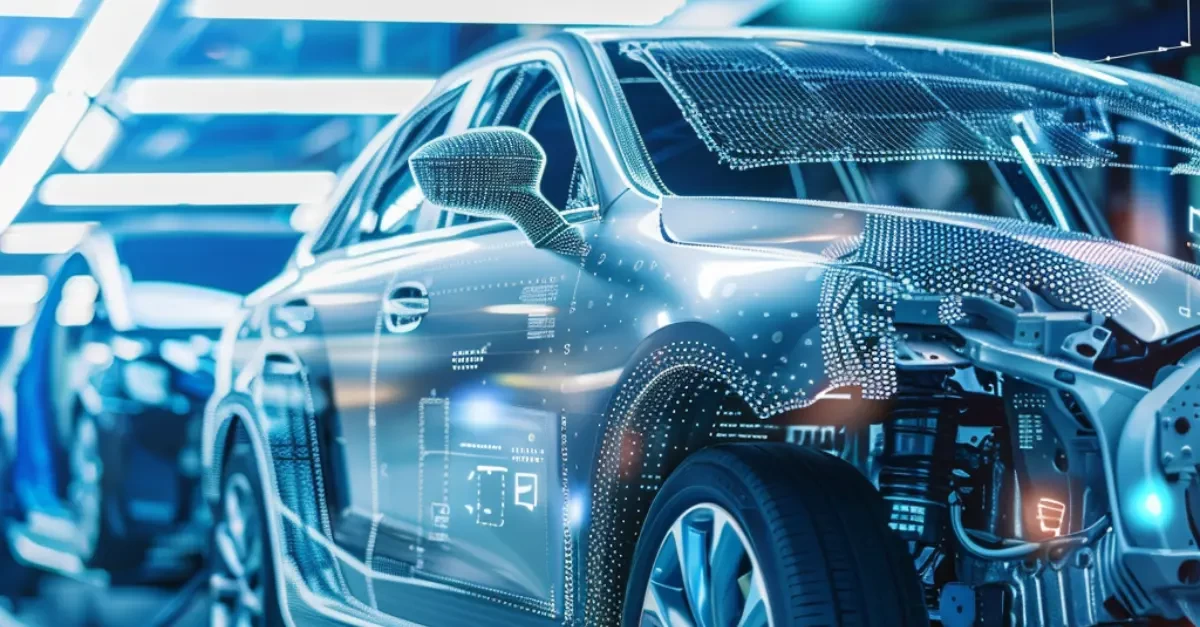Driving the Future: Digital Transformation in the Automobile Industry
Technological advances that were once thought of as futuristic concepts are now becoming a reality thanks to the development of new technology. It's no secret that the digital transformation revolution is sweeping across industries worldwide while also reshaping the future of mobility. As we witness a shift in gears towards a tech-driven future, the road to success for the automobile industry also runs parallel to digital transformation. According to Brainy Insights, the automotive digital key market is projected to reach $6.23 billion by 2030. This states that the automotive sector is revving up for a major digital overhaul that will redefine the way we move, interact, and experience the world around us.
Today's digital trends in the automotive industry are impressive and timely, given the growing appetite for a digitally enhanced experience. The emergence of artificial intelligence, predictive analytics, intelligent automation, and big data is driving the next generation of automobiles, providing real-time insights and enabling innovation. This technological advancement has resulted in new driving experiences and business models, forcing organisations to adjust to changing customer expectations and deliver personalised customer engagement on all channels.
Consumers are also becoming increasingly demanding in their quest for a more advanced and improved experience, making digital transformation crucial in the automobile industry. Instead of merely focusing on automotive manufacturing, buying, servicing, and selling vehicles, companies must now build a "connected vehicle platform" that integrates with all surrounding systems and provides customers with robust, end-to-end experiences. In this blog, let's examine the patterns fueling this transformation in the automobile industry.
Digital Disruption in the Automobile Industry and its Transformative Power
The COVID-19 pandemic has also presented unprecedented challenges to the automotive industry, leading to halted production, disrupted supply and demand, and a shift towards remote work. Fortunately, the pandemic is starting to wane, leading to increased revenues for OEMs due to the ramp-up in production throughput. As the industry cautiously navigates towards recovery, digital transformation is being embraced at an unparalleled speed, with industry leaders heralding a new normal with the aid of these tech solutions:
Digital Twin
The digital twin is one of the disruptive technologies that automotive manufacturers are adopting. Similar to virtual showrooms that allow users to explore a vehicle's features digitally, the digital twin allows manufacturers to design and simulate vehicles in a completely virtual environment. Its application includes pre-commissioning of both products and production setups, illustrating the impact of design changes, process enhancements, and production efficiency. In the automotive industry, digital twins have several important use cases, such as identifying product issues and finding improvements before they are produced, shortening development and test cycles through virtual testing and optimisation, and leveraging IoT, simulation, and predictive analytics to generate data-driven insights.
Industrial IoT (IIoT)
The IIoT is a convergence of operational technology and information technology, bridging the physical-to-digital divide by connecting people, processes, and products. By leveraging IoT sensors to collect analogue and digital data, utilising advanced analytics algorithms, and generating actionable insights, the IIoT facilitates better decision-making to enhance operational efficiency. The most important IoT application aspects in the automotive sector are predictive analytics and remote diagnostics. Some of the significant use cases for IoT in automotive industry include: predicting equipment failures and reducing downtime through predictive maintenance; analysing data gathered from production, processes, and the supply chain; and utilising cloud platforms like AWS and Azure IoT to automate control and monitor systems remotely.
Machine Learning
The automotive industry has adopted machine learning as a means of increasing efficiency, cutting costs, and improving customer experience. Machine learning applications in the industry include predictive maintenance, autonomous vehicle technology, quality control, personalised marketing, and supply chain management. This allows manufacturers to make decisions based on data and deliver new and improved products and services. For example, machine learning algorithms can analyse images of vehicles and parts to identify defects and quality issues. Additionally, data analysis from suppliers, transportation providers, and other sources can be used to optimise supply chain operations.
Augmented and Virtual Reality (AR and VR)
Deloitte's research reveals that by 2030, 22% of skilled manufacturing workers will retire, creating a significant challenge for OEMs to continue investing in workforce training. To address this issue, AR/VR technology can offer virtual training experiences for internal features of vehicles and equipment, benefiting workers with limited prior knowledge or expertise. An example of this technology is Microsoft HoloLens, which uses AR to provide self-guided instructions and on-the-job guidance for workers to learn complex tasks quickly. The key benefits of this technology include closing the skill gap by providing virtual assistance, reducing training times, increasing worker productivity, and enabling remote collaboration, technical support, and maintenance.
Automated Guided Vehicles (AGVs)
In addition to self-driving cars that are gaining popularity, there is a rise in AI-driven self-guided vehicles in the automotive industry. These vehicles, known as AGVs, are useful for automating tasks such as transporting inventory or materials within the factory and operating continuously without any downtime. By using advanced sensors like 360° cameras and LIDARs, AGVs can prevent collisions and ensure safety for both workers and the goods being transported. Some of the key benefits of AGVs include eliminating manual and time-consuming material handling processes, reducing the risk of fatigue and injuries from repetitive production tasks, and enhancing safety while working with heavy machinery and hazardous materials.
Top Hurdles in the Automobile Industry's Shift to Digitalisation
The automotive sector is currently experiencing significant changes due to the impact of digital technologies, which are disrupting conventional business practices. Nevertheless, this process of transformation presents various obstacles that the industry must overcome. Below are some of the primary hurdles faced by the automotive sector in achieving a prosperous digital transformation.

- Resistance to change - Overcoming resistance to change is essential to the digital transformation of the automotive industry. This resistance may cause implementation delays, higher expenses, and low acceptance of new technologies. Moreover, it may prevent companies from taking full advantage of the benefits of digital transformation, such as a better customer experience, higher efficiency, and data-driven decision-making. As a result, it is vital to tackle resistance to change to successfully deploy digital transformation projects in the automotive sector.
- Aging Technology - A major obstacle to the digitalization of the automotive sector is the incorporation of modern technologies into the existing, long-standing systems. Due to their reluctance to replace the old systems that have been in use for decades, numerous car manufacturers find it challenging to introduce new digital solutions.
- Finance and risk management - In this challenging economic climate, finance and risk management are the main areas of focus. The shaking investment scenario and uncertain consumer technology demand remain big obstacles for this technological development’s key supporters. Businesses that invest in vehicle digitisation will need to keep their attention on the most beneficial use cases with the highest return on investment. The biggest hurdles will continue to be estimating the return on investment of new technologies and determining the best use cases within the automobile sector.
- IT Security - With the increasing connectivity of automobiles, the likelihood of cyberattacks rises. Therefore, the automotive industry must allocate resources towards implementing strong cybersecurity measures to safeguard their data and systems from possible security breaches.
- Workforce Inadequacy - The automotive industry's move towards digital transformation necessitates a considerable change in skills and expertise. It can be challenging to locate and keep skilled professionals proficient in areas such as data analytics, cybersecurity, and software development.
- Lack of Customer Centricity - Insufficient focus on customers is a pressing issue for the digital transformation of the automotive industry. However, implementing customer-centric changes requires executing corporate initiatives and can be achieved at the dealer and service levels as well as the national level. In order for these changes to be successful, there must be consistency between the experience of individual dealerships and the digital experience across all devices.
- Regulatory Compliance - The automotive industry is subject to strict regulations, and the adoption of digital technologies brings new challenges. Car manufacturers must ensure that their digital solutions adhere to different regulations, including data protection and safety standards.
- Database Management - The automobile sector is producing vast quantities of data from diverse origins, including connected cars, manufacturing processes, and supply chain management. The significant hurdle for the industry is effectively managing and transforming this data into useful insights.
Benefits of Digital Transformation in the automobile sector
Digital transformation has been rapidly adopted by the automobile industry over the last decade, fueled by advancements in artificial intelligence, IoT, and data analytics. It has enabled companies to create new digital services, design customer-focused products, optimise their supply chains, reduce operational costs, and improve quality management. Consequently, the industry has become more productive, efficient, and customer-centric. In the future, digital transformation is expected to be an even more significant factor in the success of businesses in the automobile industry. Let's have a glimpse of some of the most significant advantages:
- Enables the creation of new digital services and products
- Improves supply chain optimisation
- Increases productivity and reduces operational costs
- Enhances quality management
- Improves customer experience and satisfaction
Future of Digital Transformation in Automobile
Due to the many intriguing and creative technologies that are now being developed, the automotive sector has a promising future in terms of digital transformation. Autonomous automobiles, connected cars, and electric vehicles are a few of the technologies that are anticipated to revolutionise the industry in the near future.
These technologies will all help to improve safety, efficiency, and sustainability. Additionally, as a result of the adoption of digital transformation, new business models will emerge that will alter how people access transport, opening up fresh possibilities for innovation and growth. More data analytics, artificial intelligence, and machine learning will lead to greater understanding of consumer behaviour, supply chain operations, and production procedures.
Furthermore, virtual and augmented reality will be used for online sales and vehicle customization as part of digital transformation to enhance the customer experience. In general, the future of the automotive industry will depend heavily on digital transformation to spur innovation and expansion in the years to come.
Global Lancers as a Promising Digital Transformation Partner
The automotive industry is currently undergoing an exciting period of innovation with new technologies emerging both within the manufacturing sector and in products for consumers. Digital transformation in automotive industry is setting a new standard for both production and the final product, leading to a better end-user experience. However, the more digitisation initiatives a company launches, the more challenges arise in managing various applications that are often separate from one another. To address this, a platform approach is needed, where a central application can host, control, manage, and interconnect all these systems. This can lead to significant operational cost savings and optimisation opportunities by considering the entire infrastructure.
With years of experience in improving business efficiencies for various automobile enterprises, Global Lancers is a prominent player in next-generation digital services and consulting. Looking forward to 2023, the ongoing wave of technological advancements promises to be both shocking and thrilling for consumers and we as your transformation partner can help make this seamless transition.
Recent Posts








Add Comment
0 Comments